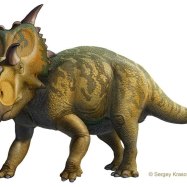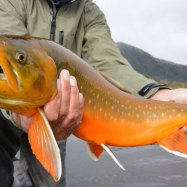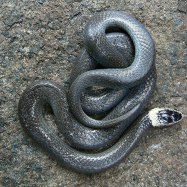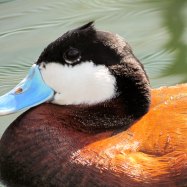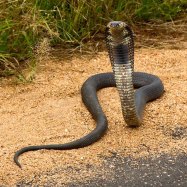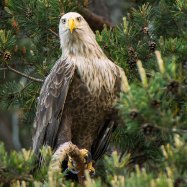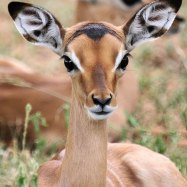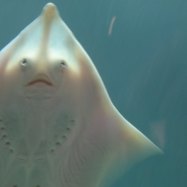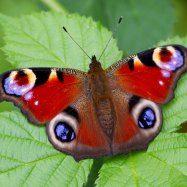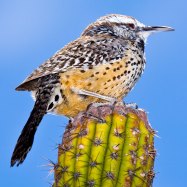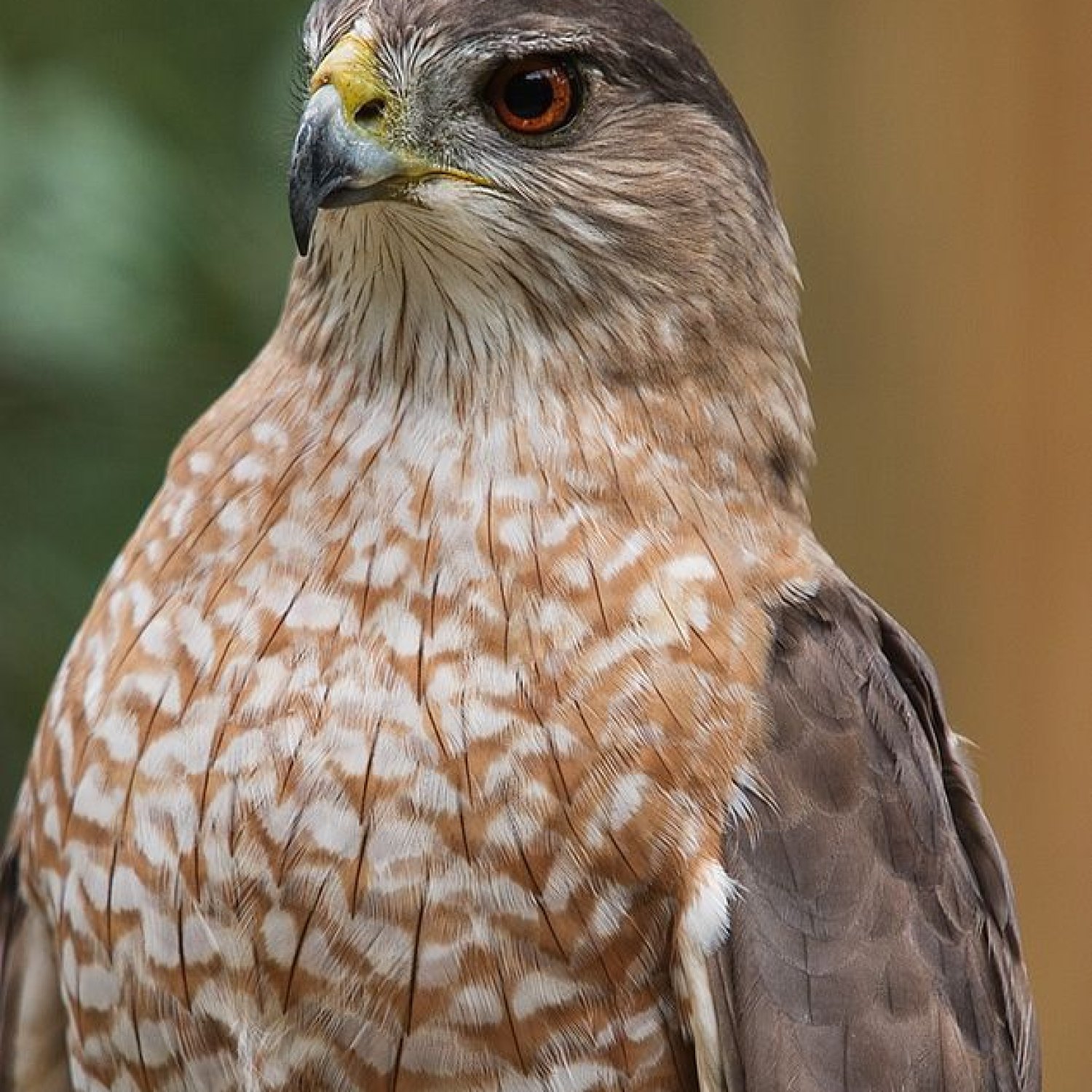
Coopers Hawk
14-20 inches
The Coopers Hawk, found across North America, is a bird of prey known for its slender body, broad wings, and long tail. Belonging to the Accipitridae family, these birds are about 14-20 inches in length and are skilled hunters. They are named after William Cooper, a famous American naturalist. #CoopersHawk #BirdsofPrey #Accipitridae
Animal Details Summary:
Common Name: Cooper's Hawk
Kingdom: Animalia
Habitat: Forests, woodlands, and open areas
The Stealthy Predator in North America: Cooper's Hawk
Standing at the top of the food chain, the avian predators known for their sharp vision, powerful talons, and keen senses have always been a source of fascination for humans. Their sleek bodies soar through the skies, and their effortless grace in flight is awe-inspiring. One such bird is the Cooper's Hawk (Accipiter cooperii), a skilled and elusive hunter found mainly in North America and Central America.Classified under the Kingdom Animalia and Phylum Chordata
Cooper's Hawk belongs to the class Aves, meaning it is a bird, and it is classified under the order Accipitriformes and the family Accipitridae, which includes hawks, eagles, and kites Coopers Hawk. These birds are known for their large size, impressive wingspans, and sharp talons, making them deadly hunters.Cooper's Hawks have striking features that make them easily identifiable, including their sharp, curved beaks, fierce yellow eyes, and powerful claws. They also have a unique coloration that helps them blend in with their surroundings and stay hidden from prey.
Habitat and Distribution
Cooper's Hawks are found in a variety of habitats, including forests, woodlands, and open areas. They are also commonly found in urban and suburban areas, making them a well-adapted and versatile species. These birds are territorial and tend to stick to a specific range, making them relatively easy to spot in certain areas.They are a widespread species and can be found throughout North America, from southern Canada to northern Mexico. They can also be spotted in Central America, primarily in tropical regions.
Fearsome Hunters with a Carnivorous Diet
Cooper's Hawks are carnivorous and have a varied diet consisting of small mammals, birds, and sometimes even insects Cape Lion. They are opportunistic hunters and will go after prey of different sizes, depending on availability. Some of their preferred prey include other birds, such as doves, pigeons, and small songbirds like jays and sparrows.These birds also have a unique feeding method that sets them apart from other raptors. They are known for their exceptional flying and maneuvering skills, which enable them to navigate through thick vegetation and chase prey at high speeds. They use their sharp talons to catch their prey mid-air, and their curved beak helps them tear through flesh and extract the meat.
Body and Physical Features
Cooper's Hawks have a slender, streamlined body with broad wings and a long tail. They have a length of around 14-20 inches, with females being larger than males. Their wingspan can reach up to three feet, making them efficient and swift fliers.They have two distinct color morphs, with adults primarily being gray on top and white on the bottom, with black streaks on their chest and belly. This coloration helps them blend in with the sky and trees while flying and staying hidden from potential prey.
Their long, slender legs and sharp talons are used for hunting, and their curved beak is perfect for slicing through the skin of their prey. Their eyesight is one of their most remarkable features, with the ability to see with incredible clarity over long distances, making it easier for them to spot potential prey.
The Life of a Cooper's Hawk
Cooper's Hawks are monogamous birds and mate for life, typically staying with the same partner for several hunting seasons. During the breeding season, male Cooper's Hawks perform impressive aerial displays to attract females and establish their territory. They build their nests in tall trees, and both parents take turns incubating the eggs.Once the chicks hatch, they are cared for by both parents, who bring food and feed them until they are ready to fledge. These birds have a relatively short lifespan, with an average of around one to two years in the wild. However, some individuals have been known to live up to 12 years.
Conservation and the Threats Faced by Cooper's Hawks
Cooper's Hawks are currently listed as least concern on the IUCN Red List, with stable populations throughout their range. However, they do face some threats, mainly due to human activities.One significant threat is habitat loss, as forests and woodlands are cleared for human development, leaving less room for these birds to hunt and breed. They are also sometimes caught in traps set for other animals, leading to injuries or fatalities.
Learning from Cooper's Hawks
Apart from being fascinating and fearsome predators, Cooper's Hawks also have much to teach us. As humans, we can learn from their adaptability and resilience, living in various environments, and being able to thrive. Their exceptional hunting skills and sharp senses can also remind us to be mindful of our surroundings and appreciate the beauty of nature.The Cooper's Hawk is a remarkable species that has captured the attention of humans for centuries. As we continue to observe and study these birds, we can gain a deeper understanding of their behavior and their significance in our ecosystems. So next time you see these stealthy hunters soaring through the skies, take a moment to appreciate their beauty and power.

Coopers Hawk
Animal Details Coopers Hawk - Scientific Name: Accipiter cooperii
- Category: Animals C
- Scientific Name: Accipiter cooperii
- Common Name: Cooper's Hawk
- Kingdom: Animalia
- Phylum: Chordata
- Class: Aves
- Order: Accipitriformes
- Family: Accipitridae
- Habitat: Forests, woodlands, and open areas
- Feeding Method: Carnivorous
- Geographical Distribution: North America, Central America
- Country of Origin: United States of America
- Location: Throughout North America
- Animal Coloration: Gray or brown on top, white on bottom with black streaks on the chest
- Body Shape: Slender body, broad wings, long tail
- Length: 14-20 inches
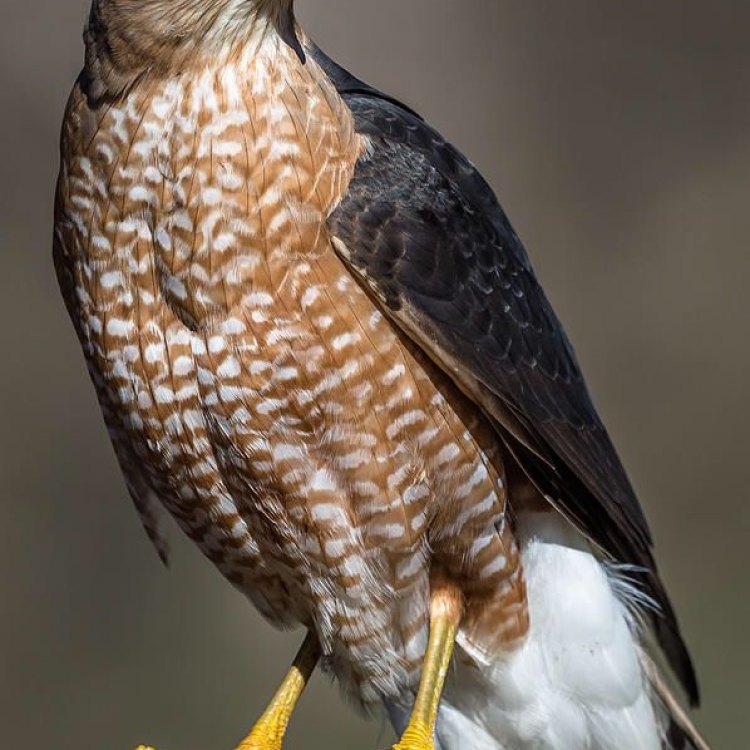
Cooper's Hawk
- Adult Size: Medium-sized hawk
- Average Lifespan: 5-10 years
- Reproduction: Sexual reproduction
- Reproductive Behavior: Monogamous
- Sound or Call: High-pitched screeching call
- Migration Pattern: Migratory, with some populations being non-migratory
- Social Groups: Solitary or in pairs
- Behavior: Agile hunters, known for their fast flight and maneuverability
- Threats: Habitat loss, pesticides, collisions with vehicles
- Conservation Status: Least Concern
- Impact on Ecosystem: Controls populations of small mammals and birds
- Human Use: Birdwatching, falconry
- Distinctive Features: Long tail, rounded wings
- Interesting Facts: Cooper's Hawks are known for their ability to fly through dense vegetation in pursuit of prey
- Predator: Great Horned Owl, Red-tailed Hawk
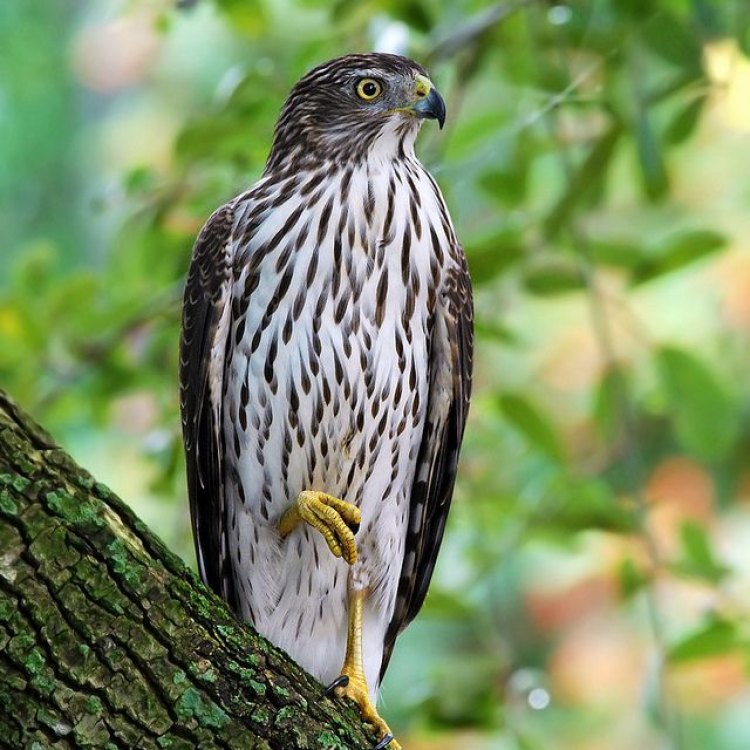
Accipiter cooperii
The Agile Hunter: Learn About Coopers Hawks and Their Unique Features
In the world of birds of prey, there is perhaps no other species as skilled and agile as the Cooper's Hawk. This medium-sized hawk, known for its fast flight and maneuverability, has captured the imagination of bird enthusiasts and scientists alike. In this article, we will delve into the unique features and behaviors of this fascinating bird, from its reproductive habits to its impact on the ecosystem.Before we dive into the world of the Cooper's Hawk, let's first get acquainted with some basic information about this species PeaceOfAnimals.Com. The Cooper's Hawk (Accipiter cooperii) is a medium-sized hawk, with an average adult size of around 14-20 inches in length and a wingspan of 24-35 inches. As with most birds of prey, females are slightly larger than males. This species has a relatively short lifespan of 5-10 years, with the oldest recorded Cooper's Hawk being 12 years old in the wild.
One of the most notable features of the Cooper's Hawk is its sharp and piercing high-pitched screeching call. This sound is unmistakable and can often be heard during their courtship rituals. Speaking of courtship, let's explore the reproductive behavior of these birds.
Cooper's Hawks engage in sexual reproduction and are known to be monogamous, meaning they mate with the same partner for an extended period. Breeding season for these birds typically occurs between March and August, with males performing aerial displays to attract females. Once a pair has formed, they will work together to build a nest, often in the forks of tall trees, using twigs, leaves, and other materials Cava Tzu.
After mating, the female will lay anywhere from 2 to 6 eggs, with an average clutch size of 3-4 eggs. Both parents take turns incubating the eggs for around 30 days before the eggs hatch. The young birds, or fledglings, will stay in the nest for around 4-5 weeks before they are ready to fledge and begin learning to hunt. It's not uncommon for young Cooper's Hawks to return to their nesting site even after they have fledged.
Speaking of hunting, the Cooper's Hawk is an agile hunter, known for its fast flight and maneuverability. These birds have been observed hunting a variety of prey, including small mammals and birds. One of their most impressive hunting techniques is their ability to fly through dense vegetation in pursuit of prey. They can quickly change direction, making it challenging for their prey to escape.
As with any species, there are threats that the Cooper's Hawk faces in its natural habitat. Habitat loss is one of the most significant threats, as humans increasingly encroach on their territory, leading to a decline in their population. Another danger comes from pesticides, which can be ingested through the prey they hunt. Collisions with vehicles also pose a significant threat to these birds, with many being struck on the road while hunting.
Despite these threats, the Cooper's Hawk's conservation status is currently listed as least concern. This is due to their adaptability to a wide range of habitats and their stable population numbers.
While these birds may be skilled hunters, they also play a vital role in the ecosystem. As predators, they help control the populations of small mammals and birds, keeping them in balance with their environment. Their presence also serves as a warning to potential prey, keeping them on high alert and reducing their likelihood of becoming prey.
Humans have long been fascinated by the Cooper's Hawk, with birdwatching and falconry being two popular activities where they are highly sought after. Birdwatchers enjoy observing these magnificent creatures in their natural habitats, while falconers admire their hunting skills and use them in the sport of falconry. Falconry is an ancient practice, with records dating back as far as 700 BC, where hawks and other birds were trained to help humans hunt for food.
Now, let's take a closer look at some of the distinctive features that make the Cooper's Hawk stand out from other birds of prey. This species has a long tail and rounded wings, which help with their agility and maneuverability in flight. These features, combined with their excellent eyesight, make them skilled hunters and efficient in catching prey.
Here are some interesting facts about the Cooper's Hawk that may surprise you:
- The Cooper's Hawk is named after the American naturalist William Cooper, who first described the species in 1828.
- These birds have been known to live in urban environments, adapting to city life and hunting in backyards and parks.
- The oldest recorded Cooper's Hawk is a captive bird that lived to be 20 years old.
- The Cooper's Hawk is a member of the Accipiter genus, which also includes other species such as the Northern Goshawk and Sharp-shinned Hawk.
While the Cooper's Hawk may be a skilled hunter, it also has predators of its own. The Great Horned Owl and the Red-tailed Hawk are two of the primary predators of the Cooper's Hawk. These birds of prey compete for the same food sources and have been known to prey on young Cooper's Hawks.
In conclusion, the Cooper's Hawk is a fascinating and resilient bird of prey that has adapted to thrive in a variety of environments. From their unique features and behaviors to their impact on the ecosystem, these birds continue to capture our attention and remind us of the beauty and complexity of nature. So next time you hear the high-pitched screeching call of a Cooper's Hawk, take a moment to appreciate these magnificent creatures and all they have to offer.
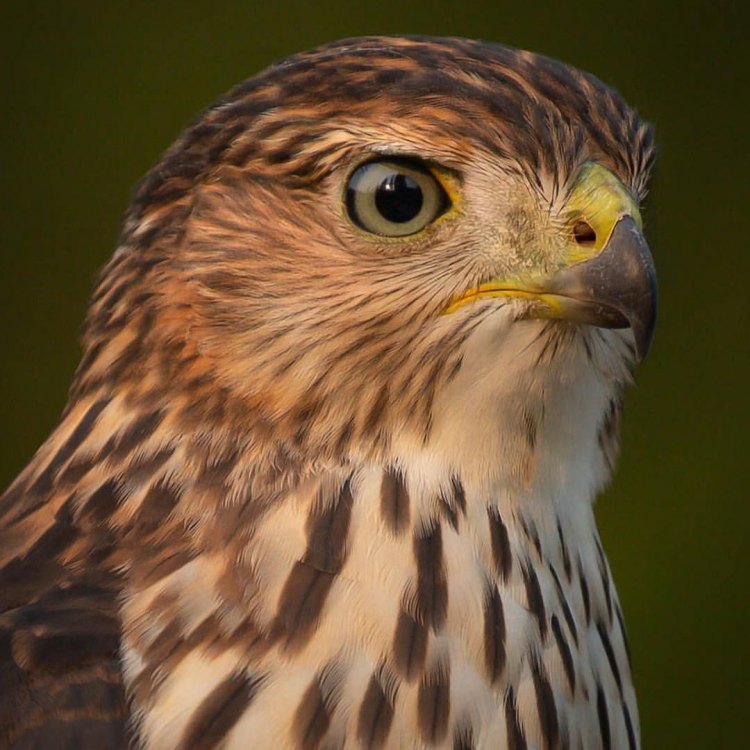
The Stealthy Predator in North America: Cooper's Hawk
Disclaimer: The content provided is for informational purposes only. We cannot guarantee the accuracy of the information on this page 100%. All information provided here may change without prior notice.

